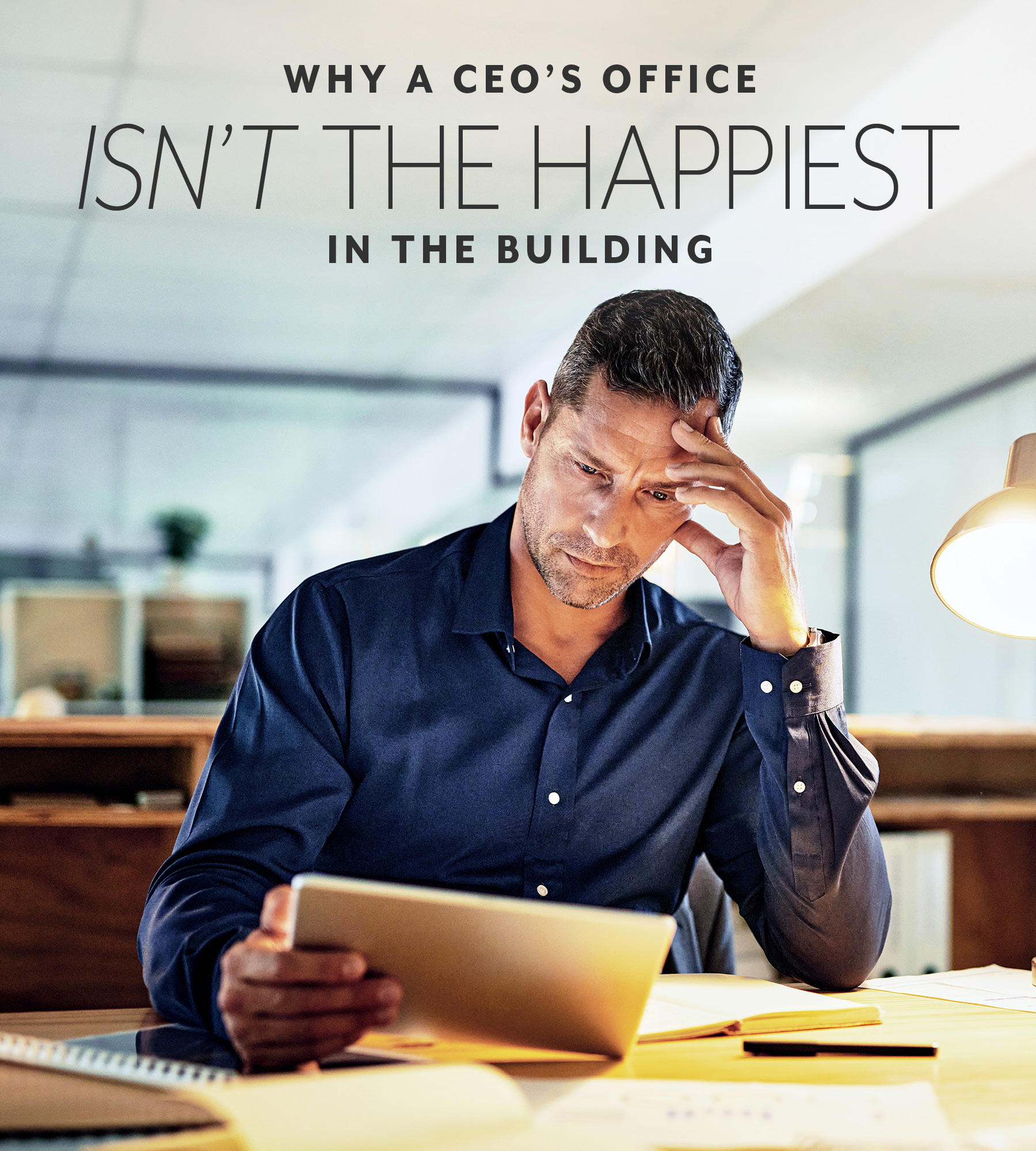Language
You can read the magazine in one of the following languages
The CEO’s office is more than a physical room: it is a position on a corporate organizational chart that has clear authority and responsibilities. The position is described by Investopedia as someone responsible for making major corporate decisions, driving the direction the company takes, supervising other executives and overseeing growth plans. They are accountable to the board of directors or stakeholders of the company and are often the public face of the organization.
From the outside, stakeholders may be seen as the public and issues surrounding the social license of the organization. The practical CEO will be more mindful of the stakeholders who are also financial investors.
Of course, there will be a reward for the risk. An average CEO salary in Australia is US$203,490. To put this in perspective, the salary package for the average Australian worker is around US$66,473. In the United States that is skewed even further – the average CEO salary in the United States is US$840,468 compared to the average worker who takes home US$59,384. Therefore the CEO’s salary package is as much as 14 times the average worker. Hence the stakeholders will be expecting 14 times the performance.

When things go wrong the directors will reluctantly seek the replacement of one person – the CEO.
At the same time, the average term of a CEO is just 4.4 years according to the Business Council of Australia. This is down from nearly six years in 2001, with the increased level of mergers and acquisitions being a key factor. In the United States it is as much as seven years and in the United Kingdom it’s only five years, while the average Australian worker’s tenure is just over five years according to the Australian Bureau of Statistics. In the United States it’s roughly four years. Broadly speaking, a CEO and average worker have the same job tenure.
CEOs are covered by the contract conditions signed at the time of appointment, hopefully after careful reading. CEOs are considered high-income employees and have accepted a written guarantee of annual earnings in Australia. Workers are protected from unfair dismissal by law as administered by the Fair Work Commission in Australia and the Equal Employment Opportunity Commission in the United States. If you have lost your job, contact the Commission first if you think you were sacked unfairly.
Directors have responsibilities to stakeholders, which can be a nice word for money-hungry investors such as superannuation fund managers who are under pressure to provide dividends to superannuation members. When things go wrong the directors will reluctantly seek the replacement of one person – the CEO.
Having set the scene of a high-wage and high-risk role with less than average worker protection, there is little foundation for a fun office. This is serious performance-based employment. The CEO’s office is not a safe place for the occupant or any visitor. While good news gravitates to the CEO’s office, bad news originates from the same place. Leadership equates the news and gives directions to maintain the vision and goals.
This high-risk, high-return situation is akin to the sword of Damocles hanging over one’s head. In the legend, Dionysius, the tyrant of Syracuse, invited his advisor, Damocles, to a banquet and seated him beneath a sword suspended by a single thread to illustrate the precariousness of power and wealth. Similarly, such decisions highlight the fragile balance between risk and reward of the life of a CEO.
The board expresses its authority through corporate charts and materialized in office layouts and fittings. Some disguise the authority held by this office with pastel-colored furnishings.
Foolish would be the person who thinks that softness is the goal of the CEO. Stationed in the corporate throne room, known as the CEO’s office, the CEO of any wisdom will know that good news gravitates to that office. A wise CEO will always be mindful that the news bearers may be the self-appointed heir apparent waiting for an opportunity to display greater potential value to the board. Hence good news is their cover. Accepting good news unquestioningly may be politically fatal.

A professional CEO’s office by its nature is not intended as a safe space nor the happiest in the building. It’s an office that provides much upside and opportunity. But there is always that sword hanging close by.
For the CEO to survive requires a shrewd review that sees through good news, reforms it to reality and all the while dresses up hard decisions as opportunities for the team to improve while still keeping the team motivated.
Therefore a professional CEO’s office by its nature is not intended as a safe space nor the happiest in the building. It’s an office that provides much upside and opportunity. But there is always that sword hanging close by.

Alan Manly
Contributor Collective Member
Alan Manly OAM is an entrepreneur and innovator with over 30 years of experience in the technology and education industries. He has over 20 years of experience as a Company Director in private, public and not-for-profit organizations. He is the CEO of CampusQ and author of ‘The Unlikely Entrepreneur’. To find out more, visit https://www.alanmanly.com.au/
